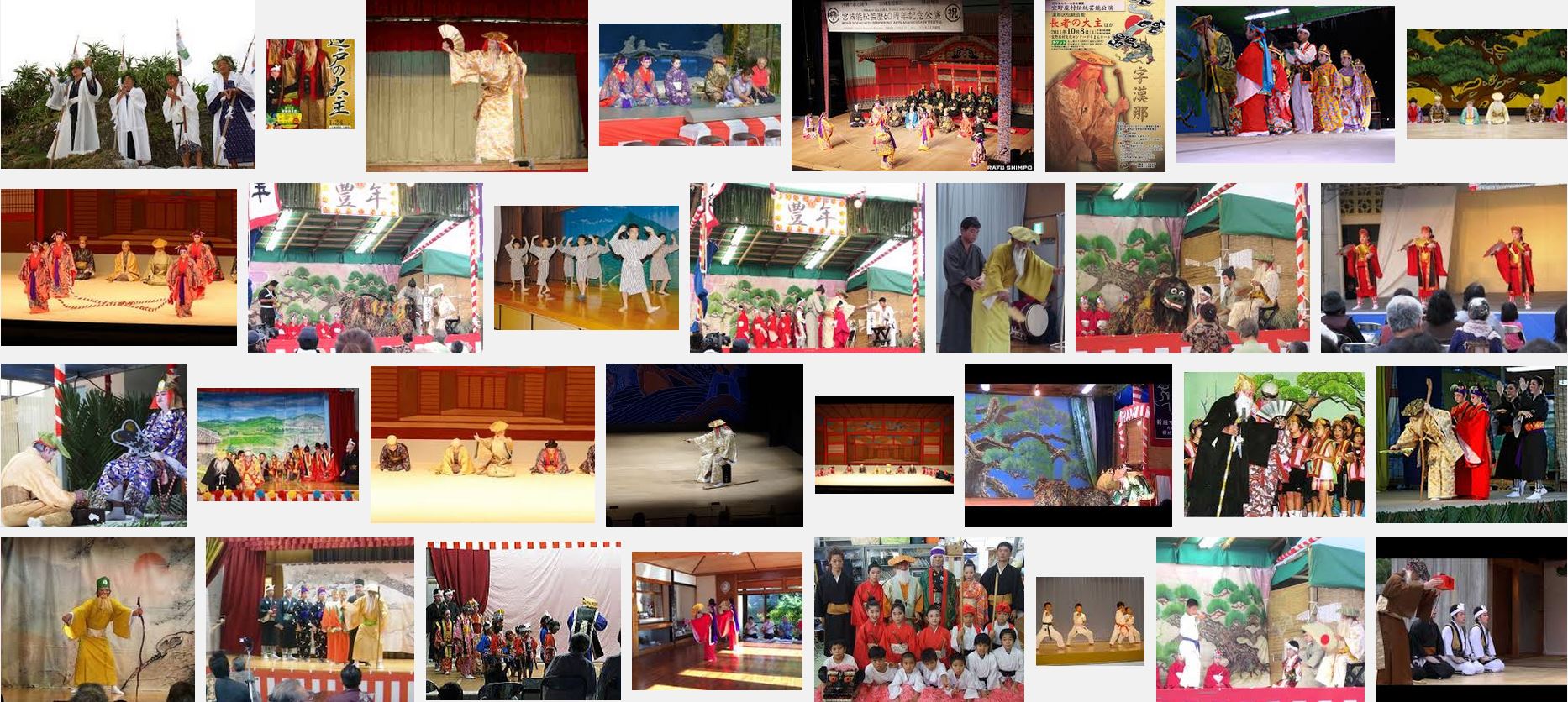Working at a US restaurant on Okinawa once established by the DOD, the caretaker, a strong, black guy, asked me about what I was doing on Okinawa. I said, in order to not overcomplicate the matter, “Karate.” And he was like “Aaaah, theater. Ok.”
Theater?
Wasn’t karate the secret and deadly martial art inherited by the few and proud who sail the stormy, pirate invested seas and bars of Okinawa? Seek-and-destroy-style close-quarter combat? The art of the hidden warriors? Although this might be true in individual cases, he was not wrong at all.
During the early 20th century, there is abundant material about Karate performances at 1. school events and 2. community events, which both were the result of a deliberate dissemination via the school system. Besides these two, the 3rd venue of karate’s early appearance was on stage as a public entertainment.
 As an example, in April 1904, the “1st Sword Dance Convention as a Relief for Front Soldiers and their Families” was held at Onoyama Park; karate was performed among others as a military entertainment. An entrance fee was charged for this, which is also true in the following case: In March 1915, the Chūza theater company placed an advertisement in a newspaper for the ancient Ryūkyū event of “The Hidden Warrior (kakure bushi)”. This was the theater play about “The martial story of the courageous and keen warrior comrade Karate Sakugawa”. Since it was issued as an advertisement under the category of entertainment, it is obvious that karate’s heroic tales were staged as theater plays at that time.
As an example, in April 1904, the “1st Sword Dance Convention as a Relief for Front Soldiers and their Families” was held at Onoyama Park; karate was performed among others as a military entertainment. An entrance fee was charged for this, which is also true in the following case: In March 1915, the Chūza theater company placed an advertisement in a newspaper for the ancient Ryūkyū event of “The Hidden Warrior (kakure bushi)”. This was the theater play about “The martial story of the courageous and keen warrior comrade Karate Sakugawa”. Since it was issued as an advertisement under the category of entertainment, it is obvious that karate’s heroic tales were staged as theater plays at that time.
In addition, recognizing this point I cannot but ponder about the various forms of bōjutsu called Sakugawa no Kon: is there a relation to this theater play? Was there a cross-influence? Was the kata there first, or was the stage play there first?
The chicken or the egg?
Three years later, in May 1918, the Chūza theater company again placed an advertisement on 13 demonstrations. The first twelve items were classical Ryūkyū dances, like the Chōja no Ufunushi, Nisē-udui (originally performed to welcome the Satsuma Resident commissioner), Kanzēkū-udui (comical depiction of three persons on a stage in Naha Tsuji), Udui-tenga’a (one of the woman dances, classified as a “dance of hand gestures”), Udui-bajanga’a, and Udui-banzai. The thirteenth item was tōde (karate), noting that “The opportunity of watching the karate masters Motobu Chōsei, Motobu Chōki, and all of the Kyans is otherwise difficult to obtain”.
There were more such theater shows, which included all sorts of unarmed and armed skills. The term universally used for the unarmed skills was tōde 唐手, the armed skills were called bō no te, yari no te, sai no te, jūtte no te and the like.
That is, karate itself has come to be performed on the stage as a spectacular public performance and – being soldierly, being martial – especially gained popularity among men. In addition, tōde (karate) as a spectacular entertainment art helped making it socially acceptable: because from the sources we clearly see that around 1900 tōde (karate) was conceived as some rude and socially unacceptable Chinese style of jūjutsu, practiced by ruffians only.

© 2015, Andreas Quast. All rights reserved.
